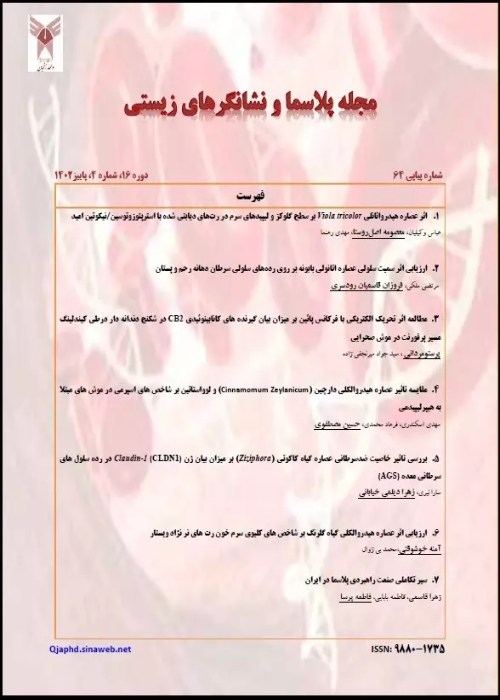Immunogenical Evalution of PLGA Nanoparticles Contain Klebsiella pneumoniae K2O1 Detoxified Lipopolysaccharide Antigen in Pulmonary Infection Model of BALB/C Mice
Klebsiella pneumoniae is the most common pathogenic bacterium in the genus Klebsiella. Every year, about 2 million children under the age of 5 die from pneumonia. Due to the acquired and inherent resistance of Klebsiella pneumoniae isolated against a wide range of antibiotics, its control and treatment appear to be critical. The aim of the present study was to use Polylactic-co-glycolic acid (PLGA) nanoparticles in vaccine design the LPS antigen of Klebsiella pneumoniae K2O1. So far, no work has been done on this strain of bacteria to make the PLGA-LPS vaccine. In the study, the results obtained from the tested mice showed that the mice were vaccinated. Immunized and titrated antibodies of IgM 315 cfu / well, IgG 321 cfu / well, and SIgA 365 cfu / well, elevated and in mice with invasion factor in patients and spleen and lung tissues, number of people compared to unvaccinated mice Is. Has gone to zero.
In the present study, the LPS antigen was extracted from Klebsiella pneumoniae K2O1 by centrifugation and detoxified with phenol.Then the LPS antigen was conjugated to polylactic-co-glycolic acid nanoparticles. Infrared spectroscopy (FT-IR) and atomic force microscopy (AFM) were used to confirm conjugation with nanoparticles. To evaluate endotoxin of the vaccine designed Tested by Limolus amoebocyte lysate assay (LAL test). success of antigen and nanoparticles conjugates based on the size and charge of antigen-containing nanoparticles was confirmed by the zetasizer.
FT-IR results the shape of the corresponding peaks confirmed the presence of antigen-functional groups in the nanoparticle structure and the formation of bonds. AFM microscopic images of nanoparticles containing LPS antigen and nanoparticles before conjugation showed an increase in the binding sites of nanoparticles after conjugated. Change from initial sharpness to puffiness after conjugation proved the success of antigen transport by nanoparticles. Fever was not observed in rabbits and mortality was confirmed in BALB/C mice.
The results showed that the vaccine was effective in immunogenicity and therefore suggested as a candidate for an effective vaccine against Klebsiella pneumoniae.
- حق عضویت دریافتی صرف حمایت از نشریات عضو و نگهداری، تکمیل و توسعه مگیران میشود.
- پرداخت حق اشتراک و دانلود مقالات اجازه بازنشر آن در سایر رسانههای چاپی و دیجیتال را به کاربر نمیدهد.



